When Times Are Tough, Utility Matters
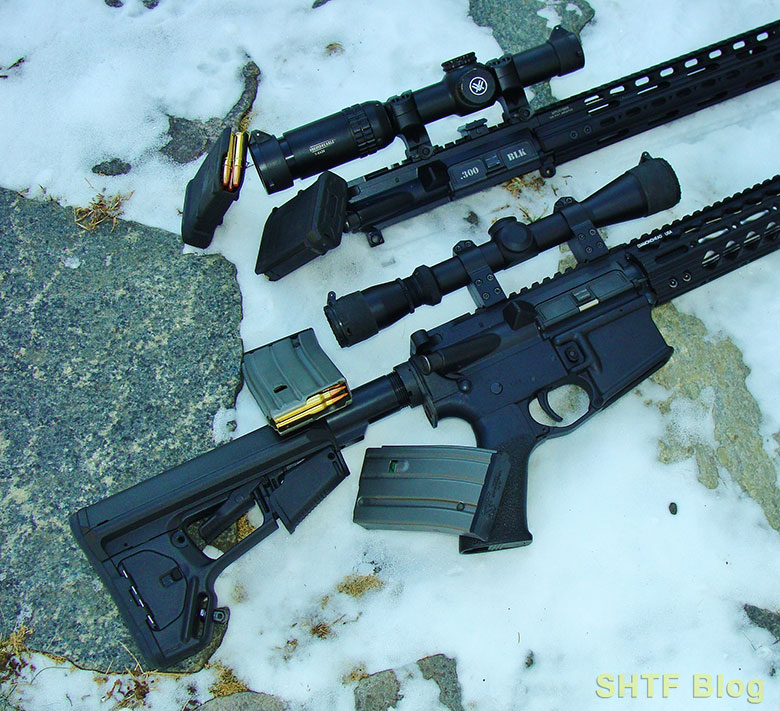
Several million Americans became new gun owners over the last few years, oftentimes to address legitimate security concerns. And for some, the initial foray prompted interest in additional firearms suitable for plinking, target shooting, or hunting, etc. The possibilities seem nearly endless, let alone the daunting list of calibers. New, and some old, gun owners are left wonder what the most useful calibers – a loaded question (pun intended) if ever there was one.
What is “Useful?”
During a recent conversation with a budding firearms acquaintance, I was grilled about my favorite caliber – as in the “best.” I’m less inclined to think in terms of “favorites” so, instead I defaulted to “useful” choices – which led to the question of: “Useful for what purpose?”
Based on sale figures alone, the .22 Long Rifle is clearly the all-time favorite. But is it the most useful? Maybe, maybe not. Depends on its intended use. You’d be hard-pressed to find a better caliber for plinking, and squirrel hunting with a .22 rifle is vintage Americana; however, it’s .22 LR hunting is not a legal in all locales.
Shooting squirrels out of trees with bullets can be unsafe, the reason why some populated areas are shotgun-only. If so, suddenly, the conversation shifts to “best” shotguns and gauges. You get the idea.
The Useful Calibers List
Anyhow, within short order my list of “useful” picks had mushroomed to eight calibers and two shotgun gauges – those I’d hate to give up based on decades of steady use. Given their ongoing popularity, others must feel the same way, the benefits for us being competitive prices and widespread availability.
Based strictly on downrange ballistics, the .30 PRC trounces the .308 Winchester, but the odds of locating a .308 box-of-something will be far greater at your local big-box emporium or general store – probably for less cost. Same for the others that made the list. They may not be especially glamorous but, as they say, these picks can still “git ‘er done.”
.22 Long Rifle
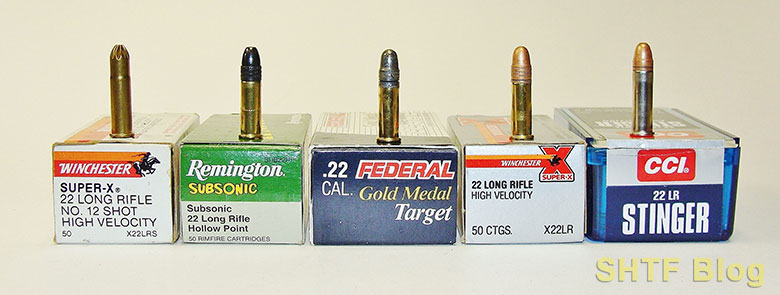
As it has been since 1884, the rimfire .22 LR is, hands-down, the perfect choice for fun-filled plinking sessions with rifles and/or handguns. It also sees plenty of use during formalized target events, or for basic practice sessions. It’s also surprisingly versatile.
Because the .22 Long Rifle is a lengthened evolution of the older .22 Long and Short versions, it’s chamber can safely fire all three calibers, along with .22 shot-loads, low-velocity CCI’s “Quiets,” and CB Caps (although feeding may be problematic in some repeaters).
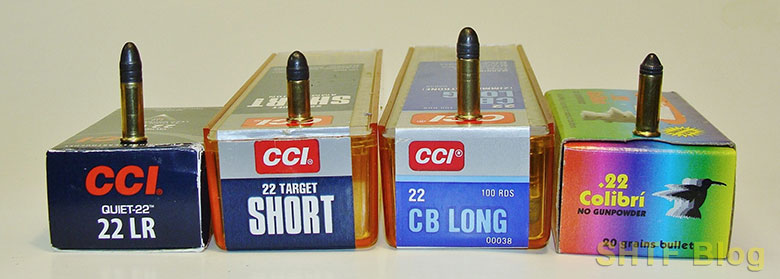
As for hunting, the .22 LR is a proven small game getter; however, it’s too light for deer – or defense. Yes, a .22 can kill a deer, but I don’t recommend it. Doing so is illegal in states for good reason.
Still, I could think of worse choices if forced to bug out on foot for a possibly lengthy trek. In fact, the Ruger 10/22 Takedown made my best guns for bugging out list for that reason (among others). With every ounce counting and no steady supply of food, a takedown semi-auto Ruger 10-22 would travel comfortably with several magazines and several hundred rounds of CCI Mini-Mags.
If it boiled down to only one gun with defense being the top priority there are better choices, but for just about everyone else, a .22 LR is a must-have caliber. Ammunition prices have risen sharply during recent years, but a 500-round “brick” of plinking-grade .22 LR can still be purchased for around $40 – around the same cost as a 20-round box of some centerfire rifle cartridges.
Read my book Rimfire Rifles: A Buyer’s and Shooter’s Guide if you want to learn more about this particularly useful caliber (and the caliber that follows).
- Markwith, Steve (Author)
- English (Publication Language)
- 182 Pages - 09/28/2015 (Publication Date) - Prepper Press (Publisher)
.17 Hornady Magnum Rimfire
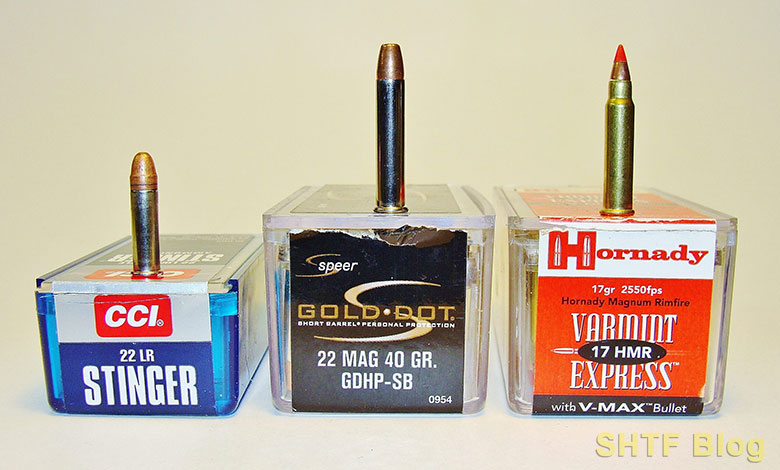
Too expensive to qualify as a plinking load, too destructive for small game, and too underpowered for big game (or even large varmints), the .17 HMR is still a cartridge I’d hate to be without. For starters, as other happy owners have discovered, it’s surprisingly accurate – even in less pricey rifles.
With a muzzle velocity of around 2550 fps, the tiny .17-caliber bullets also shoot flat enough to hammer smaller varmints out to around 200 yards. Report-wise, the .17 HMR is a great choice for settled areas where a centerfire (like the .223) would be a concern, and its flyweight (17-20-grain) bullets reduce worries over ricochets. I’ve used this caliber with great success on crows, western prairie dogs, eastern woodchucks, porcupines, etc.
However, larger varmints like bobcats and coyotes call for larger calibers such as the upcoming .223. Some may prefer a .22 Magnum, but the .17 HMR does shoot flatter, with similar rimfire cost savings. Although not a must-have caliber for everyone, the unique little .17 HMR can fill a useful niche. And, thanks to its ongoing popularity, unlike the flash-in-the-pan .17 Hornady Mach-2, ammunition is readily available.
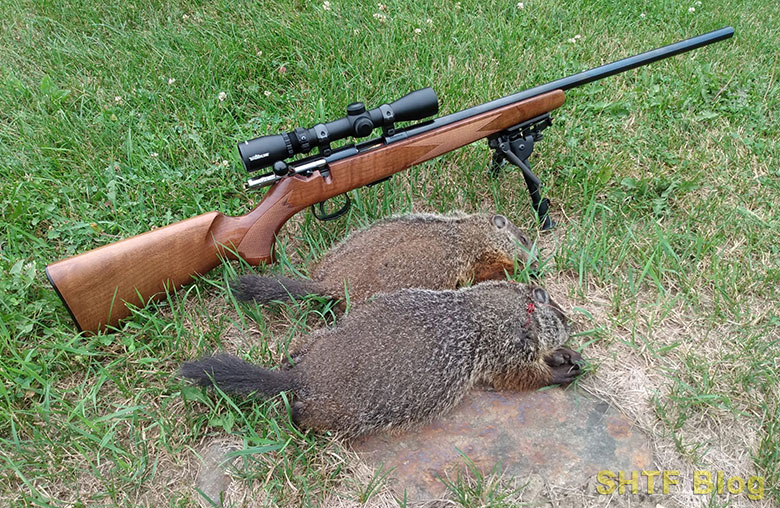
.223 Remington/5.56x45mm NATO*
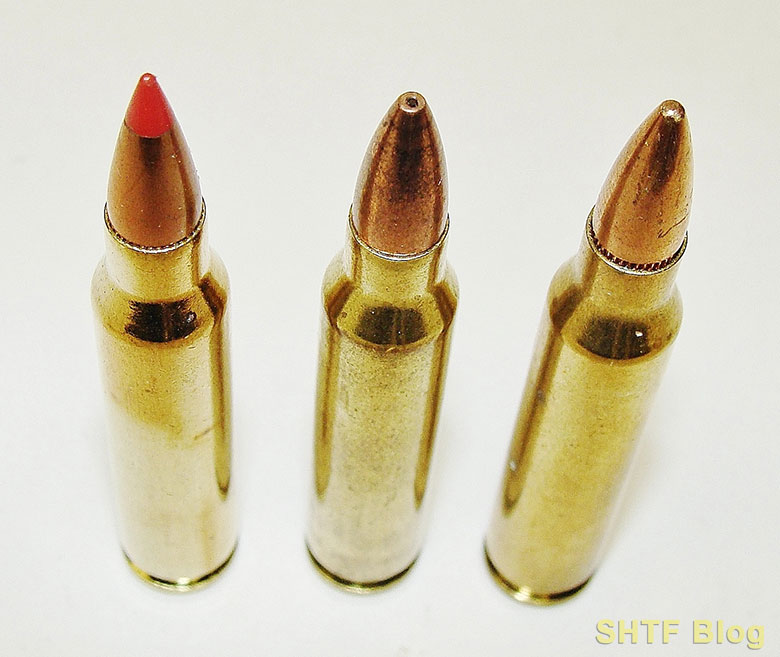
Nowadays, these nearly identical “calibers” are synonymous with the AR-15. But, in its civilian guise, the .223 Remington is equally at home in bolt-actions and other sporting rifles where it serves admirably as an affordable practice and/or varmint cartridge. It won’t shoot as flat as a .22/.250 or other recent newcomers, but I’ve used the .223 with great effect during high-volume prairie dog outings where shots out to 500 yards were the norm.
It can also anchor larger varmints like bobcats and tough northern coyotes with the right bullets (I’ve had good luck with Federal’s 55-grain Ballistic Tips). Actually, plenty of R&D has been poured into both the .223 and 5.56. If your frame of reference is older G.I. 55-grain “ball,” a number of good bullets have since appeared for both sporting and defensive purposes. See my article comparing the ballistics of these rounds.
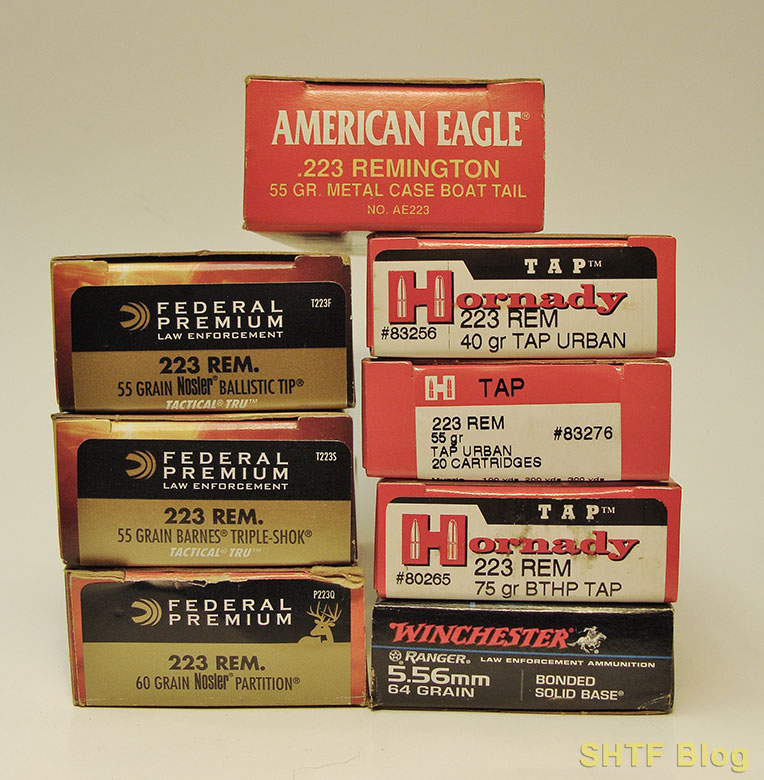
Today, the civilian AR-15 (along with other similar designs), is a viable defensive choice. On the move, where weight and space are important, even a fairly modest stash of seven 30-round magazines can provide plenty of firepower – assuming ammo is available.
If you want to read more about centerfire rifles, and a special section on AR-15s, read my book Centerfire Rifles: A Buyer’s and Shooter’s Guide.
- Markwith, Steve (Author)
- English (Publication Language)
- 264 Pages - 12/03/2016 (Publication Date) - Prepper Press (Publisher)
The .224 Valkyrie is faster-stepping cartridge, but the country is awash with useful .223 and 5.56 loads. Contrary to declarations from numerous pundits though, neither iteration is truly “high-powered.” For this reason, during deer season, I switch a larger caliber (see .223 vs .308).
*Note: Civilian .223 loads can be safely fired in 5.56 NATO chambers, but the reverse can be unsafe due to the higher pressures of 5.56 rounds (addressed via different chamber specs).
.308 Winchester/7.62x51mm NATO
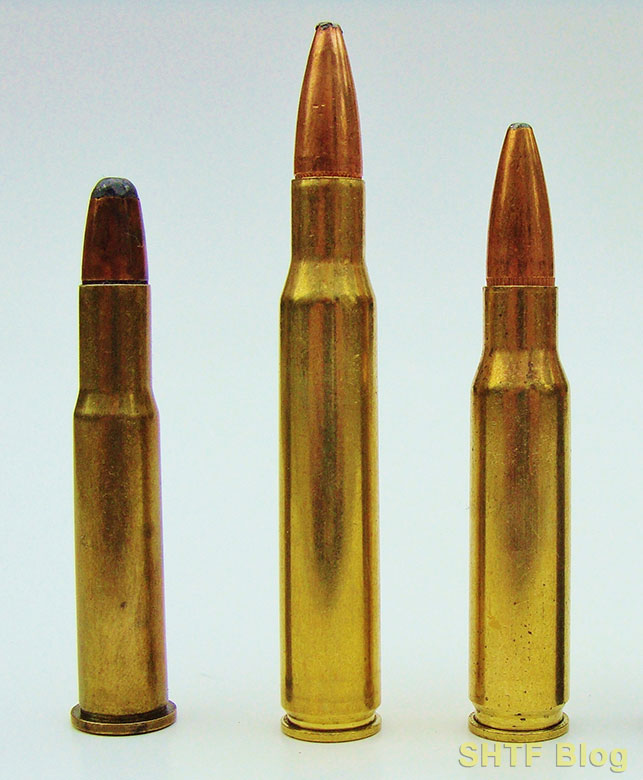
If I was limited to just one rifle, with hunting in the cards, it would be chambered for the .308 Winchester. Being the civilian equivalent of military 7.62 NATO, ammunition is readily available, and both “calibers” can be used interchangeably. The sporting .308-equivalent can be found in a huge assortment of useful offerings, from 150-grain loads that approach 2900 fps (.30-06-league), to reduced-recoil options that approximate the .30-30.
As much as it pains me to omit some other great calibers (like the ’06), from a strictly pragmatic viewpoint the .308 is enough gun to handle most needs. These includes large animals through moose, and targets of a quarter mile (or double that distance with the right technologies). There are plenty of tactical .308 variations to choose from as well.
In areas with dangerous bears, a more potent caliber would be preferable, but today’s monolithic (solid copper) expanding bullets can narrow the gap. Meanwhile, even the plain ‘ol 150-grain Remington Core-Lokt is plenty good for deer, the main source of meat in my household. When it’s time to restock the freezer, the .308 cartridge is a nice match for a handy short-action bolt-gun.
But all of the primary action types are represented to include single-shots, lever guns, pumps and semiautos – the latter often configured as AR-10 variants, stamped “7.62 NATO.” For reloaders, if need be, fired cases can be reformed to create .243 Winchester, .260 Remington, .7mm/08 Remington, .338 Federal, and .358 Winchester cartridges – all siblings of the .308 Winchester
9mm Luger/9x19mm NATO
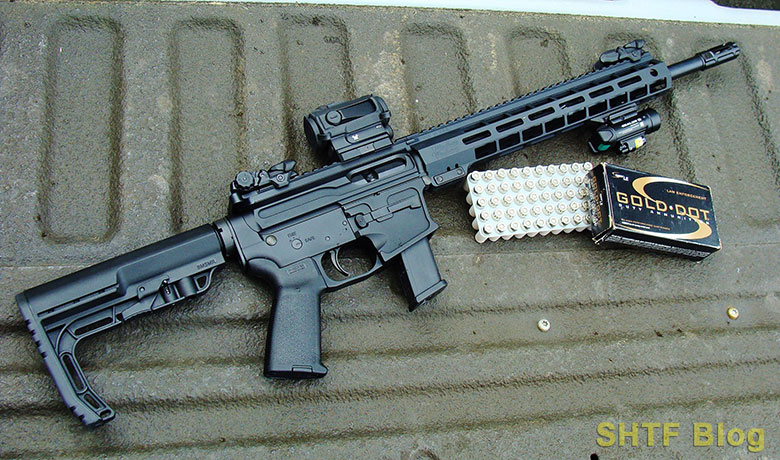
For a while, the newcomer .40 S&W was the shining defensive pistol star, but nowadays the 9mm shines more brightly than ever thanks to constant bullet improvements – to the point where it’s making a dent in .45 ACP sales. The 9mm hits the sweet-spot of power vs recoil in a carry-friendly handgun of generous capacity. From here things get better via the wave of new pistol-caliber carbines (PPCs) that run off standard Glock magazines.
Combine both firearms and you have the makings of a viable defensive and bug-out survival system. Most 9mm loads will only gain a slight velocity boost in a carbine-length barrel; somewhere around 15%. Still, with careful shooting, a 124-grain JHP could take an average deer within typical woods distances – if it came down to it. Switch to FMJs and you have the technology to harvest small game with minimal meat loss.
For indoor defensive purposes, unlike a short-barreled 5.56, muzzle blast and flash are much more tolerable – even in a handy 9mm configured as an AR-type pistol. Ammunition is light enough to lug in reassuring quantities, and the common caliber simplifies logistics. The .30 Super Carry is interesting new cartridge, but 9mm ammo is a whole lot easier to locate.
.357 Magnum
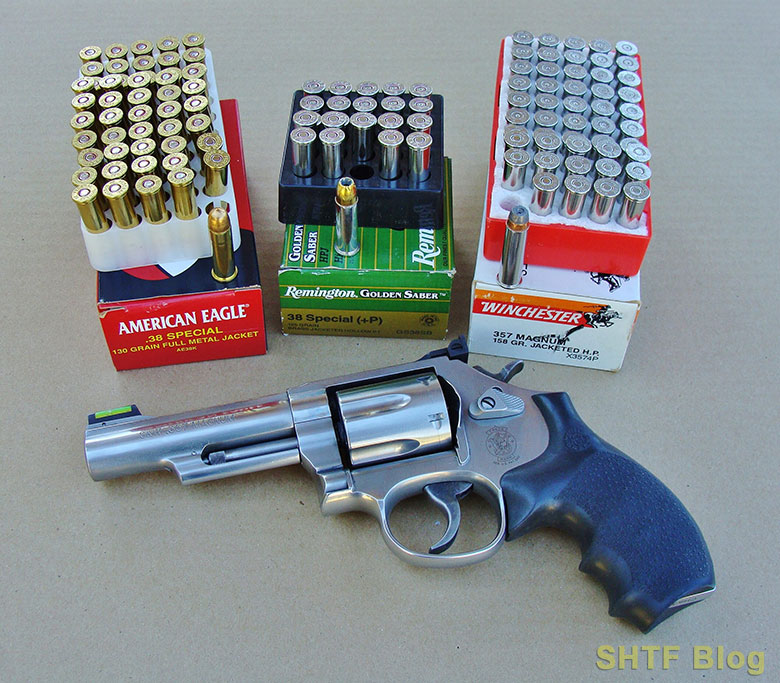
Long considered a benchmark of “stopping power,” the .357 is also downright versatile. Yes, it’s a revolver cartridge, but wheel-guns are far from dead. They’re also not fussy about bullet designs and operating pressures. Actually, you could score four guns-in-one with the .357 Magnum: a hot-rodded evolution of the .38 Special with a slightly elongated case. Either cartridge can be safely fired in the chamber of a .357 Magnum – which opens the door to a third distinct power level.
This trio includes tractable .38 Specials, warmer but still manageable .38 Spcl +Ps, and full-house .357 Magnums. Go with 130-grain .38 Spcl FMJs and you’ll have a useful practice and small game load. A simple switch to an expanding 125-grain +P (extra pressure) JHP will net a manageable defensive load. A jump to the .357 Magnum will provide enough power to take deer-sized game with careful shooting out to at least 50 yards – a pretty good poke for any handgun.
But this distance can be doubled through a switch to the fourth option, a .357 Magnum rifle. Unlike a 9mm, the .357 Mag gets a major velocity boost when fired in a carbine-length barrel. A standard-weight 158-grain JHP that averages around 1250 fps from a 4-inch revolver may reach or exceed 1750 fps in a handy 18-inch carbine. Using the latest tough expanding homogenous bullets like Buffalo Bore Ammunition, larger critters could be fair game in a pinch.
Concerning defense, a side-loading lever-action can be topped off to maintain full readiness. If backed up by a medium-frame .357 Magnum revolver, you could consider yourself suitably armed. Those that roamed the edges of civilization during the 1870s employed the same strategy with .44 WCF (.44-40) Colt Frontier revolvers and Winchester Model 73 lever-actions – which takes us to a more recent .44-caliber development.
.44 Magnum

The .44 Magnum is a souped up and lengthened version of the older .44 Special. Thus, much like the .357 Magnum, either load can be used. Why not just go with a .44 Magnum in the first place? Well, you could, but testosterone aside, full-house .44 Mag loads of 240 to 300-grains are a stretch for many shooters. In fact, even .357 Magnum loads will push the envelope for some.
But for experienced handgunners after power with tolerable recoil, the .44 Magnum fits the bill nicely in a readily available caliber. Actually, make that two with the .44 Special thrown in: the latter being darned close to .45 ACP with today’s effective defensive loads. And like the venerable .44/40, the .44 Magnum is a useful choice for those seeking a companion rifle.
The same standard-weight 240-grain bullet that averages 1150 fps from a 4-inch revolver may get a 400-fps boost from an 18-inch carbine – plenty of thump for a black bear or hog. Use a heavy hard-cast flat-point and you’ll have all the penetration you could ask for. In a pinch it would be a whole lot more reassuring than a .357 Mag if staring down a large ornery bear – again, with Buffalo Bore Ammunition to hit hard.
.45 Automatic Colt Pistol (.45 ACP)
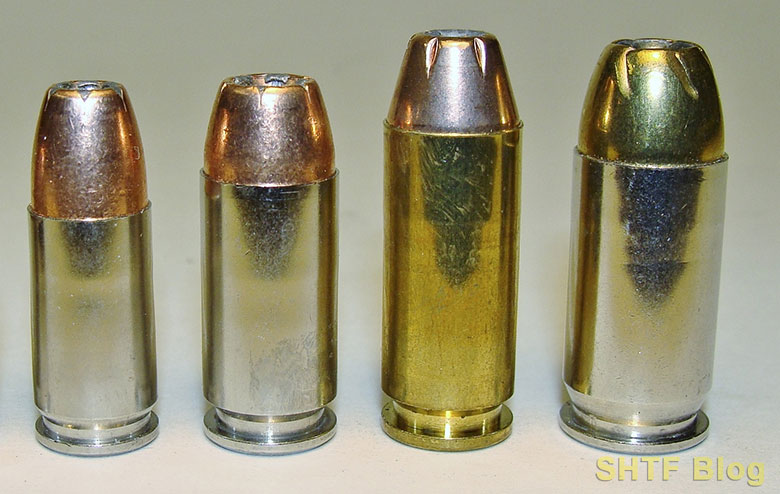
Although the 9mm has made inroads to the .45 ACP, its continued ballistic comparisons are telling. Plus, the 1911 Government Model Pistol is still very much alive, joined by numerous .45 ACP high-cap offerings. The potent 10mm Auto has given it a run, but of note, both are built on the same-sized frames.
I’ve owned M-1911s in both calibers but have since returned to the .45 ACP. When stoked with fast 185-grain +P JHPs clocking around 1150 fps, performance is on par with many 10mm loads – with better odds of locating ammo. At the risk of repeating myself or sounding like a sponsorship, the Buffalo Bore Ammo again makes a powerful .45 ACP round if that’s required.
Or shoot a time-tested slower but heavier 230-grain load (preferably a JHP). Here’s another nice benefit for owners of .45 ACP 1911s: You can turn one into a .22 LR within minutes through a .22 conversion kit. Since these kits ship with .22 LR magazines and fully equipped slide-assembles, they’ll even be pre-zeroed.
The slides are typically aluminum and light enough to stash in a pack. Both cartridges are “old”, but unlike the now obscure .45 GAP that arrived with a splash during 2003, they’re readily available.
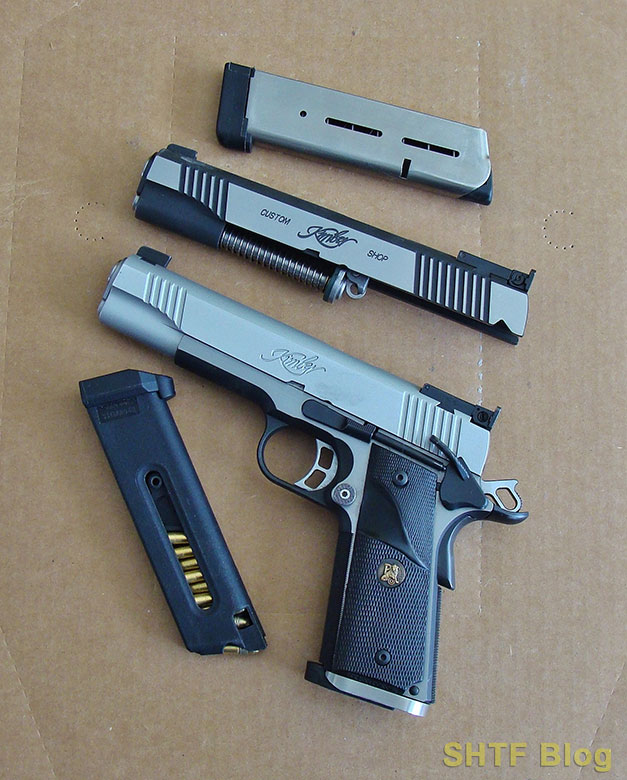
For more information about handguns, cartridges, and useful loads, read my book Handguns: A Buyer’s and Shooter’s Guide.
- Markwith, Steve (Author)
- English (Publication Language)
- 418 Pages - 07/13/2019 (Publication Date) - Prepper Press (Publisher)
12 Gauge Shotgun
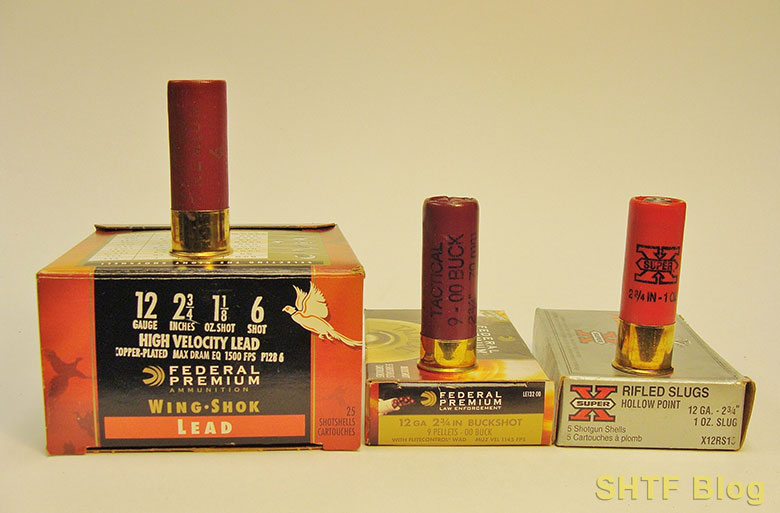
If I was limited to only one firearm, it would have to be a highly versatile 12 gauge shotgun. Lighter 2 ¾” shot loads will handle clay targets or upland birds, a simple switch to heavier 3” Magnums will cover larger waterfowl or turkeys, and buckshot will tackle defensive – all using the same barrel. I’ve identified it as the single best gun for homesteaders.

And then there’s the rifle option provided by a slug. Essentially, a humongous .73-caliber 1-oz. bullet, it’ll take just about anything roaming North America. A basic smoothbore Foster “rifled” design is useful out to around 100 yards if the shot is well-aimed. However, since most bird guns are pointed rather than aimed, their simple bead “sights” make that difficult.
The expedient solution is an affordable 26 – 28-inch pump-gun with a 3” chamber – such as a Remington M-870, or Mossberg 500-series gun – equipped with a spare rifle-sighted slug barrel. Barrel swaps are a breeze and slug barrels are typically shorter, making them a handy choice for defense when stoked with buckshot. The ubiquitous Remington 870 is easily converted into a tactical shotgun. As for shells, just about any place selling ammunition will have a box of 12 gauge-something on hand.
20 Gauge Shotgun
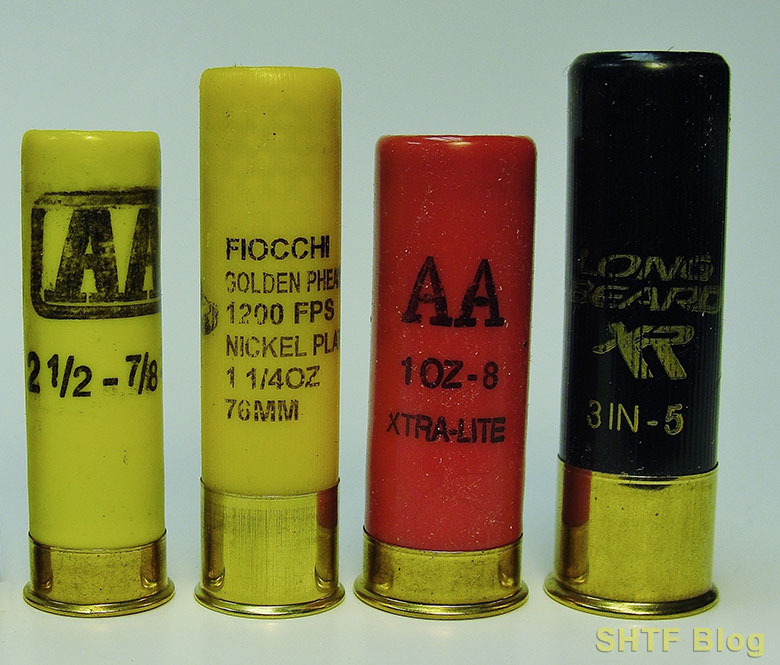
The next most popular gauge is the “twenty,” which offers many of the advantages of a 12 gauge, in a lighter and softer-shooting gun – for the most part. Nearly all of today’s 20s feature 3” chambers for use of magnum loads, but 2 ¾” shells provide docile alternatives. For smaller-statured shooters and/or beginners, a 20 Gauge is a great choice.
And, like many other adults, I often carry one to gain a nimble upland bird gun, reserving the 12 Ga. for waterfowl and turkeys. FYI, the same two-barrel 12 Ga. strategy is possible with 20 gauge shotguns.
Last shameless plug: For more about shotguns, read my book Shotguns: A Comprehensive Guide.
- Markwith, Steve (Author)
- English (Publication Language)
- 190 Pages - 11/27/2014 (Publication Date) - PrepperPress.com (Publisher)
Closing Comments
Seems like lists of tens are a common theme, but this pick & choose version is mostly a coincidence. Again, the focus is on useful choices in more readily available calibers. My go-to .30-caliber big game rifle is a Remington Model Seven chambered for the “short-mag” .300 SAUM. Unfortunately, that caliber was quickly eclipsed by Winchester’s similar .300 WSM.
As a result, factory-loaded ammunition is now hard to find and expensive. For me, the practical solution is handloads, but if travel was involved, I’d rather give up 300 fps and enjoy the peace of mind offered by a .308 Winchester. Or a .30-06, .300 Winchester Magnum, etc. Note to self: It’s pretty easy to grow a list. Gotta draw the line somewhere!
What are your most useful calibers? Let me know in the comments section.



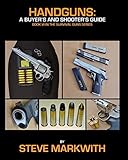

2 comments
Hmm, not a bad list and probably about the same thing I would come up with for myself personally. I think though it may depend on who and where an individual lives along with the focus of why they want to own the firearm.
.44 is probably too much for most people though it does make a good upgrade to .357/.38 for pistol caliber since both have pistol and carbines available. If in Bear country though, definitely better then .357. Also while common, it can be hard to find ammo.
As old as it is, a .30-.30 is supposed to be a good bet. While not a high power round, it is so common you can find ammo just about anywhere.
For me, I stick with 30-06, not really recommended, but in a pinch, you can shoot .308 in it, You can also make 25-06 out of the brass, if you have a modern rifle, in good shape; that big case can take a lot of powder